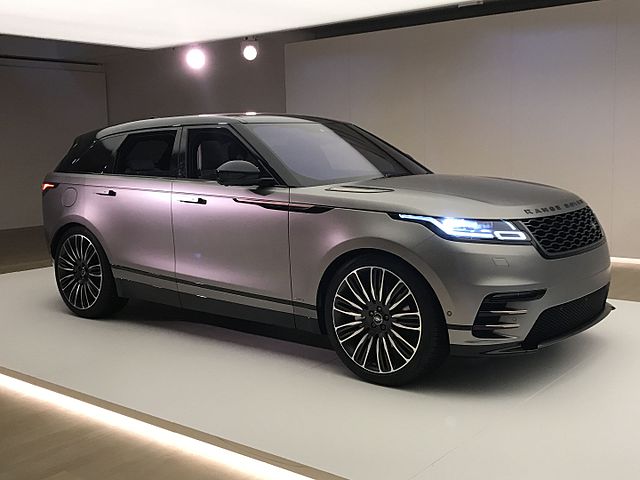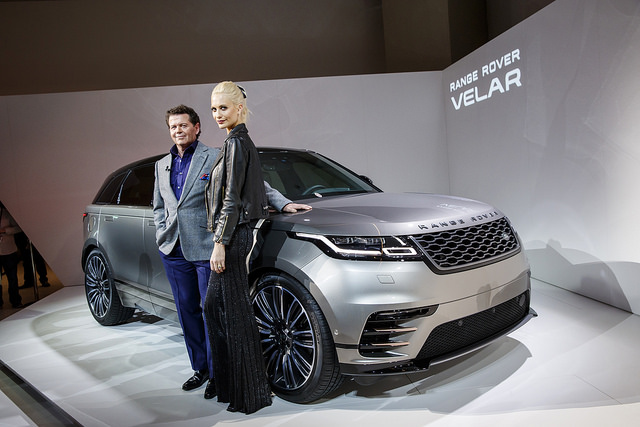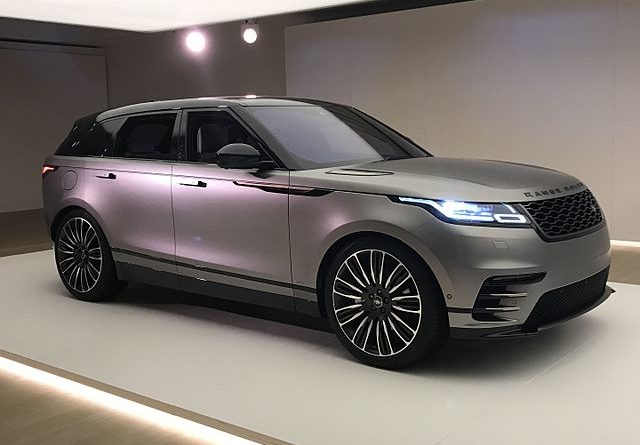Range Rover Velar Spotted
Range Rover are a car company that has been at the top of their game for a long time now. As a result, the company is starting to take some risks. First, we got the Evoque, a car that departed from the company’s traditional lineup, offering customers something that they could use to pick up the shopping or take the kids to school that would be small enough to whizz in and out of traffic. After that, came the open-top Evoque, a strange chimera of a car, neither one thing nor the other, but still popular among consumers.
Now the company has come up with a new concept: a car that fills the “white space” between the smaller Evoque and the larger Range Rover Sport.
The journey to make the new Velar began over three years ago, after the launch of the Evoque. Company executive Gerry McGovern said that it became apparent, through their market research, that customers wanted something that was more heavy-duty than the Evoque, but that wasn’t as bulky as the Sport. The result was the Velar, a car whose name comes from the name given to Range Rover’s car prototypes back in the 1960s.

The design of the car is different to what we’re used to seeing from Range Rover. Instead of being boxy, the upcoming Velar will be sleek and tapered to the back end. As a result, it sits between the Evoque and the Sport not only in terms of practicality but also in terms of looks. The sleek lines help to accentuate the car’s slimmer profile.
Range Rover also haven’t shied away from including some beautiful aesthetic flourishes. For instance, the door handles on the Velar are transplanted directly from the Jaguar F-Type. The handles are flush with the car body and remain hidden within the bodywork until needed. This is something that is nice to see, especially in a premium car. To the dismay of many, the recently released Bugatti Chiron has cheap-looking handles which stick out from the bodywork, potentially ruining aerodynamic efficiency. But Range Rover hasn’t cut any corners here, producing a stunning aesthetic that will help reduce fuel consumption, in particular on the motorway.
Like many other modern cars, the Velar comes fully equipped with LED headlights. Range Rover knows that many of its customers like to go offroad in the dark, and so the headlights themselves are extremely bright. They’re also incredibly slender compared to the old bi-xenon lights, allowing Range Rover to play with the size of the front headlights in a way that simply wasn’t possible in the past.
Technology

As you might expect, the Range Rover is brimming with the latest technology. The standout feature on the Velar is the Touch Pro Duo, the infotainment system that comes with the car. It features not one, but two HD touchscreens, making you feel as if you are in some kind of command center when you sit in the cabin. The last time a car provoked this kind of response was when Tesla released the Model S with its single touchscreen dashboard. The touchscreen itself is divided into sections to make use while driving easier. The upper menu is divided into three windows: one for phone, one for navigation and one for media. The idea here is that drivers can simply swipe across to change between modes, helping them to keep their eyes on the road.
Drivers can also access other options from the touchscreen that would traditionally have been placed on the dashboard, like the climate control as well as the Terrain Response settings.
Engine
Those who purchase the Velar can expect to pay a lot of car insurance. Not only is the car expected to retail for around the same price as the Volvo XC90, but it also comes in some powerful engine options. Those on a budget can opt for the somewhat underpowered 180 bhp 2.0 liter Ingenium diesel engine. But given the poor performance of low-powered engines in the past, this probably won’t be the most popular option. That’s why Range Rover offers two additional engine sizes, a 2.0-liter diesel engine that will develop 240 bhp and a 3.0-liter V6 engine that will develop more than 300 bhp. CO2 emissions, as you might expect, increase as the engine size increases.
Interior
Over the last decade, Range Rover has developed a reputation for building cars with exceptional interiors. Early indications suggest that the new Velar is no different. The car comes with leather upholstery on high-end models, with standard models fitted with what the company is calling “premium textile finish.”

